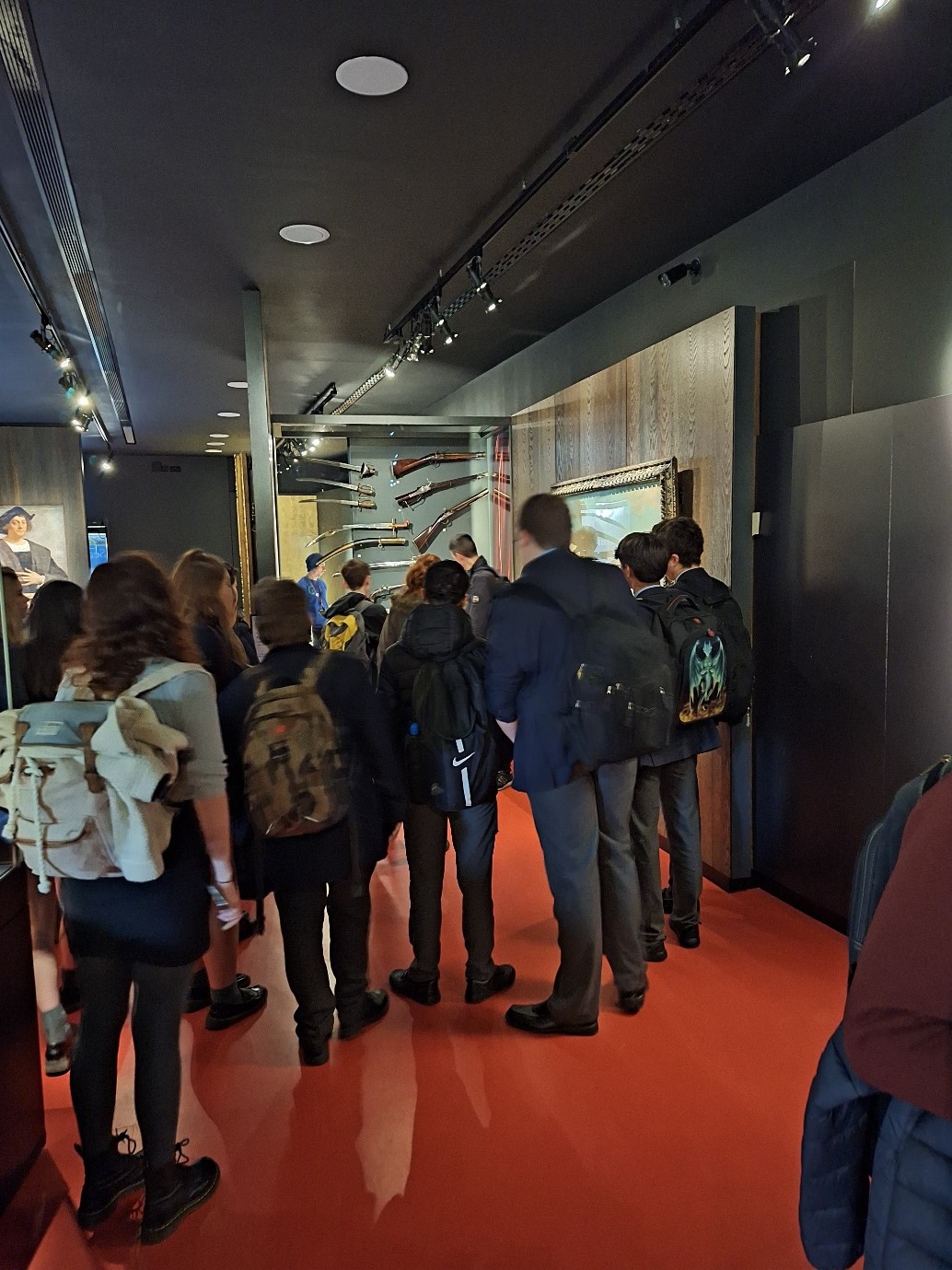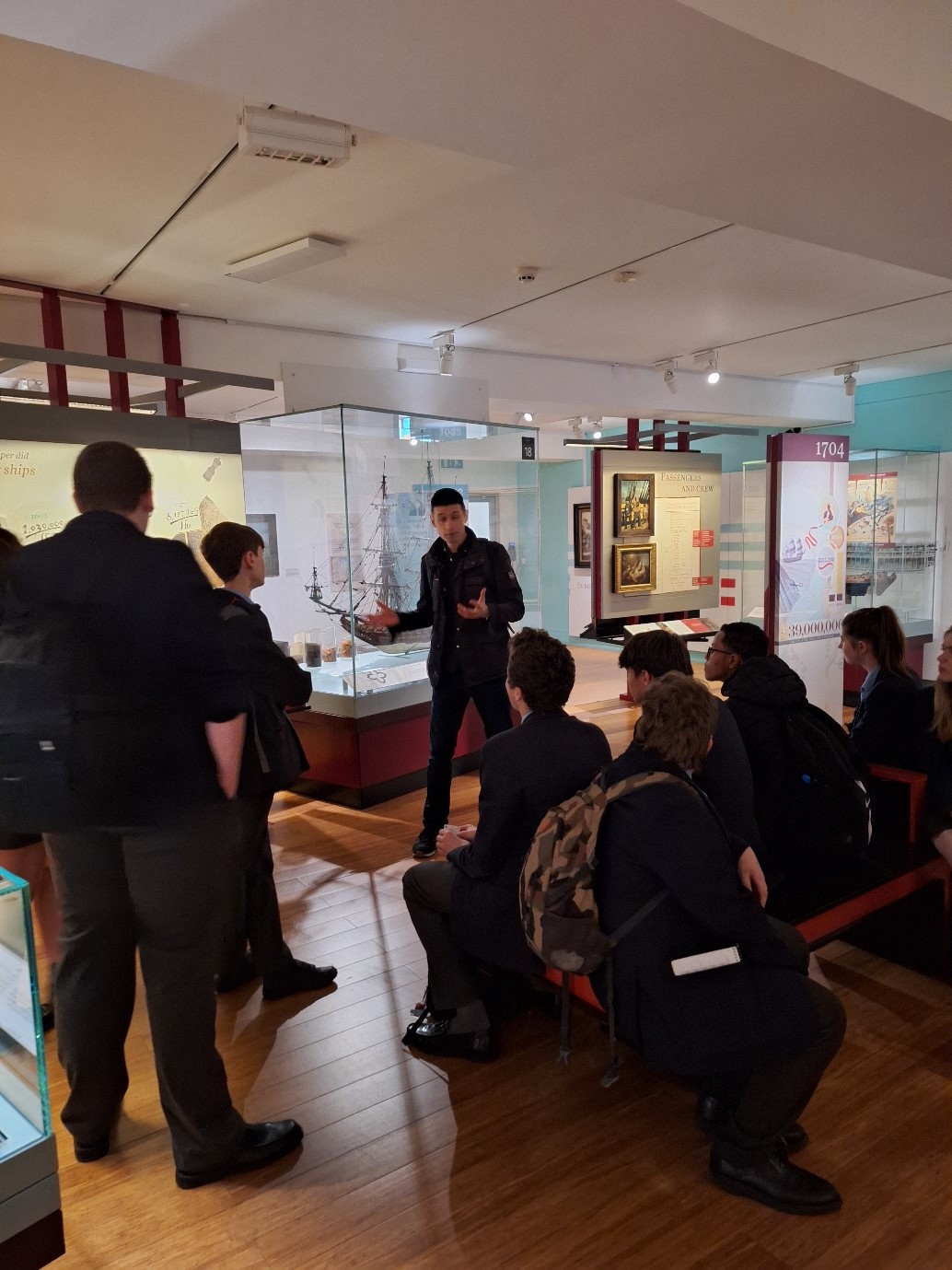Exploring Maritime History: The Isle of Wight meets the National Maritime Museum
Exploring maritime history: The Isle of Wight meets the National Maritime Museum
Between January and April 2024, the team worked with Mr Wright and his pupils at the Island Free School in Ventnor on the Isle of Wight to explore various aspects of maritime history. On 17 April 2024, we rounded things off with a visit to the National Maritime Museum in Greenwich.

Cars, bikes, buses, ferries, trains, and tubes: we used quite a few modes of transport to get there, but when we arrived in Greenwich our focus was squarely on waterborne means of travel and communication.
Final preparations for the London Marathon were in full swing when we emerged from the DLR station to bright spring sunshine and an array of maritime history to explore. On the way to our ultimate destination at the National Maritime Museum (NMM), we walked past Cutty Sark, the famous tea clipper now preserved in dry dock in Greenwich, and then through the grounds of the Old Royal Naval College.
We stopped outside the NMM to look at the Queen’s House and the Royal Observatory beyond, before proceeding into the museum for a whistle-stop tour. We saw the Admiralty Board models, pages from Edward Barlow’s diary, and Drake’s silver-mounted coconut cup in the Tudor and Stuart Seafarers gallery. Downstairs, in the Atlantic gallery, we stopped to hear the story of the portable guillotine before moving on to look at a variety of items associated with the East India Company in the Traders gallery. We finished things off by exploring the Nelson, Navy, Nation gallery. As we left the museum, we walked past Yinka Shonibare’s impressive work of art, Nelson’s Ship in a Bottle.

A well-earned lunchbreak in Greenwich Park was the prize for making it to the top of the hill. Our trek there was rewarded by the opportunity to see – or at least imagine – the Prime Meridian line and to gaze out towards St Paul’s in the distance. After all that, it was back to Waterloo Station and a return to the south coast for everyone.
During our visit to Greenwich, we saw lots of objects that related directly to some of the key themes that we have been exploring together: maritime trade, transatlantic slavery, and naval power among others. But we also got a chance to think about how this history is presented to the general public, the connections with other historical themes and periods, and the ongoing relevance of all of this in explaining the world we live in today.
A final word of thanks: to Mr Wright and Ms Hart for getting everyone to Greenwich and to all of the students who took part in the programme over the past few months!










